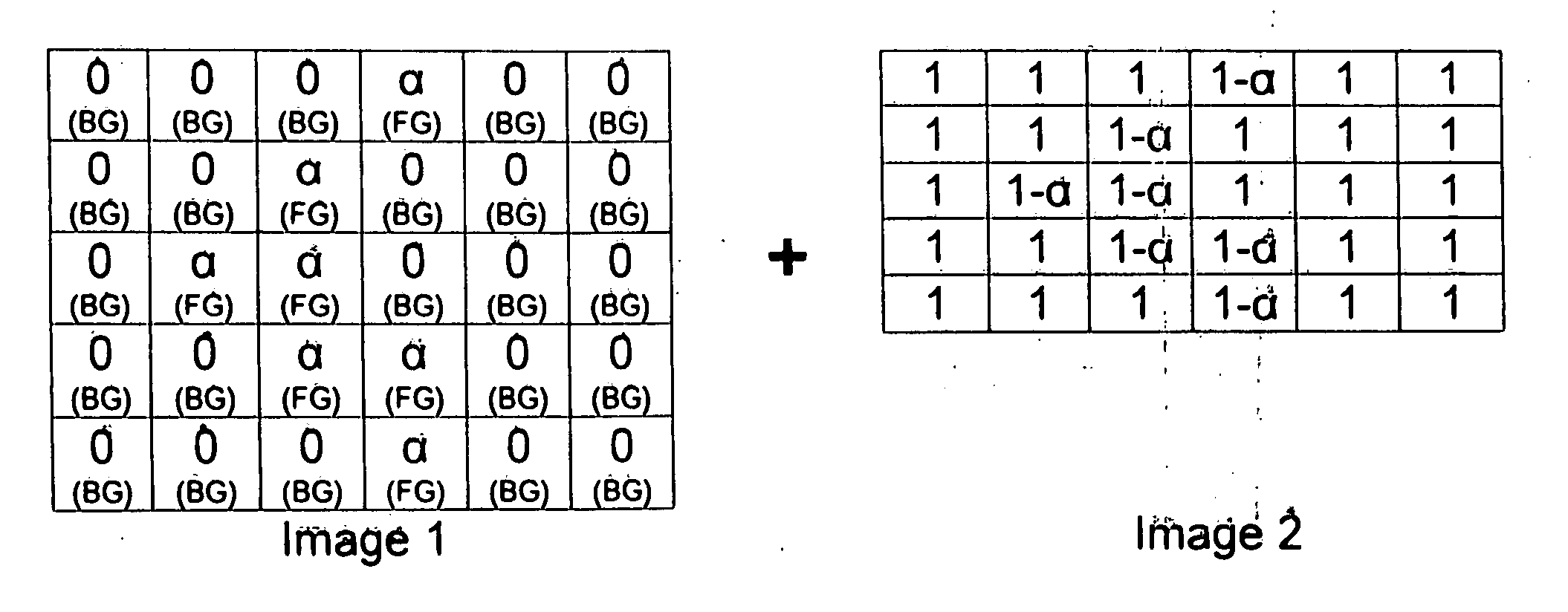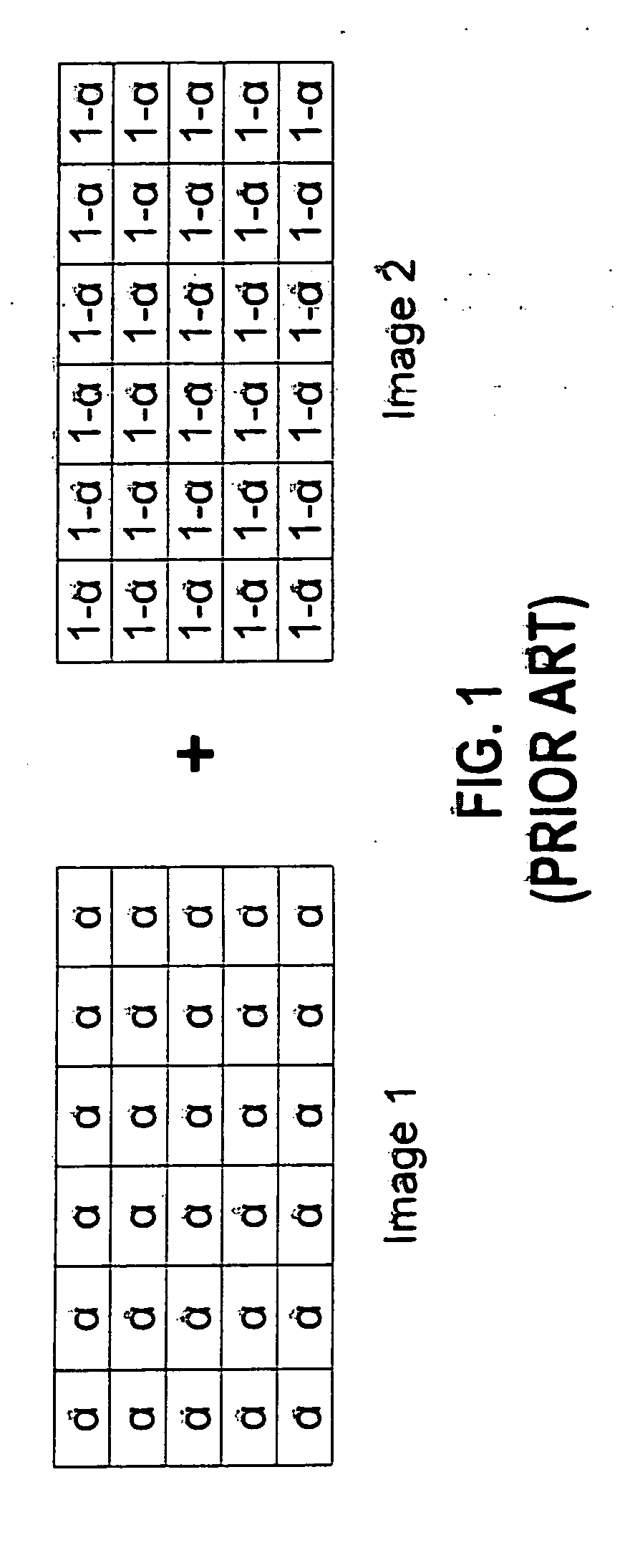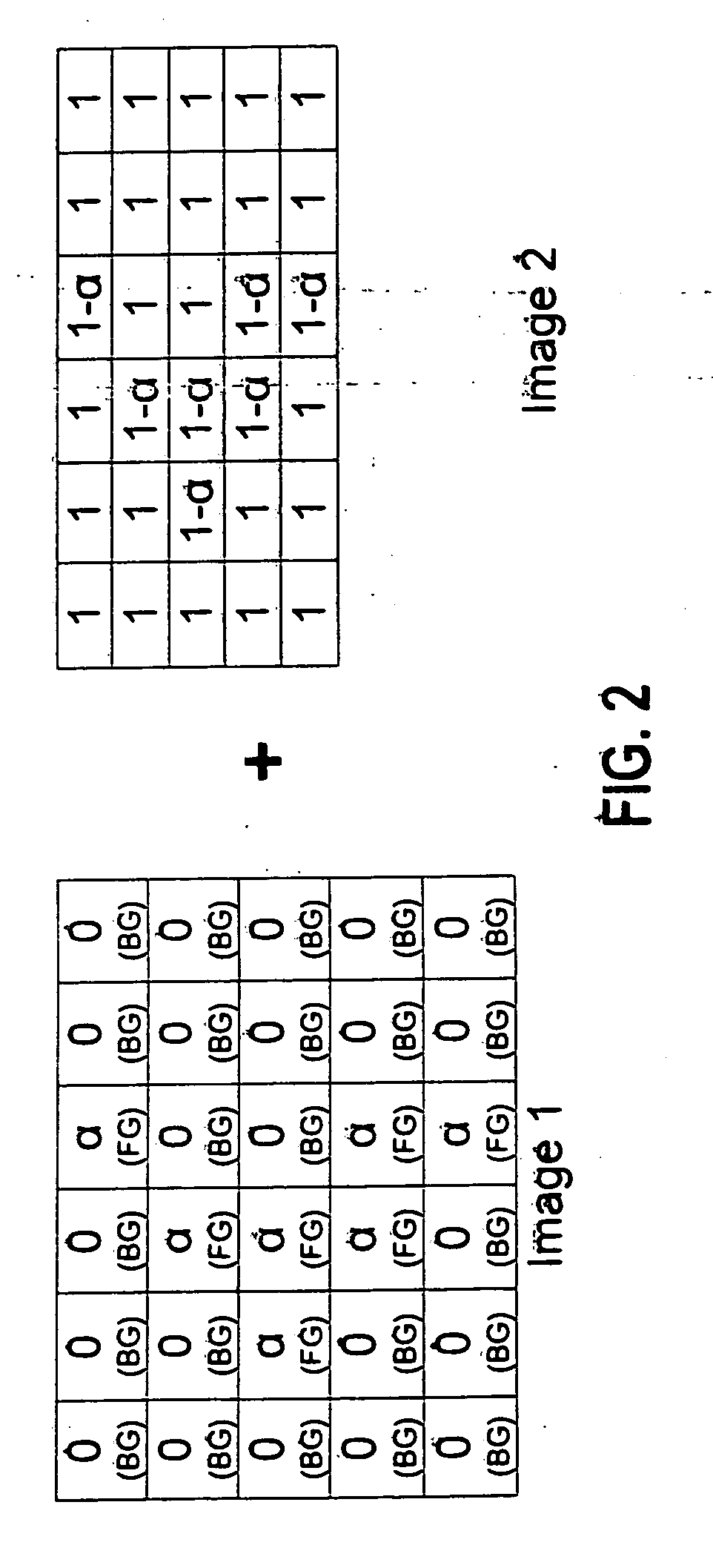Method for combining two images based on eliminating background pixels from one of the images
a technology of background pixels and two images, applied in the field of combining multiple images, can solve the problems of undesirable approach, usually contains a lot, and background pixels problematically reduce the contrast of the other image,
- Summary
- Abstract
- Description
- Claims
- Application Information
AI Technical Summary
Benefits of technology
Problems solved by technology
Method used
Image
Examples
Embodiment Construction
[0019]FIG. 2 illustrates a threshold based alpha blending. In this case, the alpha values are set for each pixel independently. A threshold image is determined according to some threshold image designation criteria. For example, this maybe determined as the image containing the most background pixels (as noted previously, this may also depend on the application) dividing the foreground from the background. Here, Image 1 is selected as the threshold image to be divided between foreground and background pixels.
[0020] In the threshold image, the alpha value for pixels below the threshold (the background) are set to zero, and the respective alpha values corresponding pixels in Image 2 (non-threshold image) are set to one, indicating that these background pixels of Image 1 make no contribution to the combined image. The alpha for those pixels of Image 1 containing foreground information are set to a value α, and the corresponding pixels in Image 2 are set to (1−α) so that the total cont...
PUM
 Login to View More
Login to View More Abstract
Description
Claims
Application Information
 Login to View More
Login to View More - R&D
- Intellectual Property
- Life Sciences
- Materials
- Tech Scout
- Unparalleled Data Quality
- Higher Quality Content
- 60% Fewer Hallucinations
Browse by: Latest US Patents, China's latest patents, Technical Efficacy Thesaurus, Application Domain, Technology Topic, Popular Technical Reports.
© 2025 PatSnap. All rights reserved.Legal|Privacy policy|Modern Slavery Act Transparency Statement|Sitemap|About US| Contact US: help@patsnap.com



